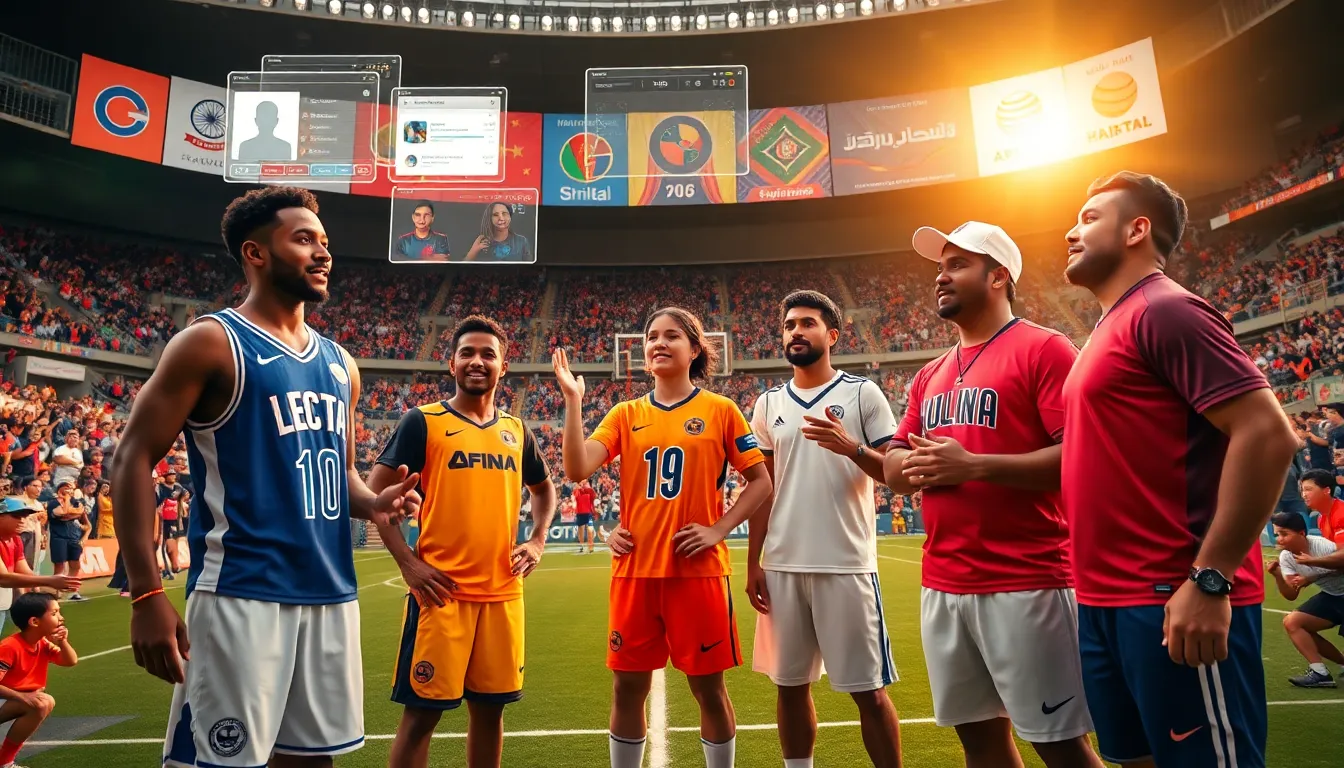In the ever-evolving world of sports, the intersection of various factors, cultural, technological, and social, shapes not just the games played, but also their significance in our lives. This comprehensive analysis of the latest sports buzz delves deep into these intersections, uncovering how they influence everything from participation and engagement to the future of the athletic landscape.
Table of Contents
ToggleUnderstanding The Intersection Of Sports And Culture

Sports have long been a reflection of the cultures that produce them. They are not merely a source of entertainment, but also a means of bringing people together, a canvas for social issues, and a stage for cultural expression. In recent years, the connection between sports and cultural identity has grown even stronger. For example, events like the Olympics showcase not just athletic prowess but also cultural displays through the opening ceremonies and national representation.
Sports also influence and are influenced by current events and societal movements. Take the Black Lives Matter movement, for instance. Numerous athletes have used their platforms to advocate for social justice, bringing cultural issues to the forefront of sports conversations. This not only raises awareness within their communities but also engages fans in discussions about race, equality, and justice.
Also, cultural phenomena such as music and fashion find their way into the sports realm, bridging gaps between various communities. Athletes like LeBron James and Serena Williams often set trends that extend beyond the court or field, impacting the cultural landscape as a whole.
The Role Of Technology In Modern Sports
As technology continues to advance at a rapid pace, its role in modern sports has become increasingly pivotal. From sophisticated training tools to innovative fan engagement strategies, technology is transforming how athletes train, compete, and connect with their followers.
Wearable technology, such as smartwatches and fitness trackers, provides athletes with invaluable data about their performance metrics, allowing for tailored training regimes. Coaches and trainers use this data-driven approach to optimize everything from training intensity to recovery strategies, leading to improved performance and reduced injuries.
Also, technology enhances the fan experience both in and out of the stadium. Virtual reality (VR) and augmented reality (AR) technologies are enabling fans to experience sports in ways previously unimaginable. Events can be accessed from home with an immersive experience that mimics being present in the arena.
Also, advanced analytics play a crucial role in strategy formulation for teams. Coaches and analysts use big data to dissect individual performances and team dynamics, informing game-time decisions and player recruitment strategies. This reliance on technology has made sports not just a game of instinct but a deeply strategic affair.
Social Media’s Impact On Sports Engagement
Social media platforms have revolutionized the way sports are consumed and engaged with globally. The immediacy and accessibility of platforms like Twitter, Instagram, and TikTok allow fans to connect with athletes and teams in unprecedented ways.
Athletes can build personal brands beyond their athletic achievements, sharing glimpses of their lives, thoughts, and interactions with fans. This access fosters deeper connections, allowing fans to feel more like part of the athlete’s journey rather than just passive observers. High-profile athletes also use these platforms to voice opinions on social issues, further amplifying their influence and reach.
Sports organizations have capitalized on social media to enhance fan engagement, using it as a tool for marketing and interaction. Live updates, behind-the-scenes content, and interactive polls keep fans engaged during games, extending the experience beyond the physical confines of the stadium.
Besides, social media has created fandoms that celebrate not just a team but the culture surrounding it. Memes, fan art, and commentary often go viral, influencing public perception and driving discussions on various aspects of sports, from performance to social issues.
Diversity And Inclusion In Sports
In recent years, the sports world has faced increasing scrutiny about diversity and inclusion. As society evolves, so too does the expectation for sports organizations to reflect the communities they represent. This demand goes beyond mere representation: it involves creating environments where diverse participants feel welcomed and valued.
Efforts to include athletes from underrepresented ethnic, gender, and socioeconomic backgrounds are gaining traction. Initiatives to recruit diverse coaching staff, front office executives, and board members are crucial steps towards fostering inclusive sports environments. The hiring of women and minorities in leadership positions is essential for creating role models for future generations.
Also, grassroots programs focusing on outreach and participation among marginalized communities are helping to dismantle barriers to entry in sports. By investing in youth programs and providing resources such as equipment, training, and mentorship, organizations can cultivate diverse talent and foster a more inclusive sports culture.
The impact of these efforts transcends the sports arena, influencing societal norms and expectations around equality and representation. The ongoing conversation around diversity not only enhances the game itself but contributes to broader cultural changes.
The Future Of Sports: Trends To Watch
As we look ahead, several trends are shaping the future of sports. The integration of advanced technology, the push for social equity, and evolving fan expectations are steering the industry toward a new frontier.
One significant trend is the continued rise of eSports, which has exploded in popularity. Traditional sports organizations are starting to invest in eSports teams and events, recognizing the potential of this booming market. This hybridization represents a shift not just in what sports are, but also in who participates in them.
Plus, sustainability is becoming a priority for sports organizations. Awareness of environmental issues has prompted teams and leagues to adopt eco-friendly practices, from utilizing renewable energy sources to reducing waste at events. This commitment to sustainability resonates with fans, particularly younger audiences who prioritize environmental responsibility as part of their consumer choices.
Also, mental health awareness among athletes is gaining recognition. Programs supporting psychological well-being are now as critical as physical training, reflecting a more holistic approach to athlete performance. This trend signifies a cultural shift towards valuing mental health in competitive environments.
Conclusion
To conclude, the intersection of sports with culture, technology, social media, diversity, and emerging trends paints a complex but vibrant picture of the current sports landscape. As these elements continue to intertwine, they will shape not only the way sports are played but also how they are perceived by society. The ongoing evolution reveals an exciting future, where engagement, equity, and innovation form the foundation of a more inclusive and dynamic sport experience. Understanding this intersection is essential for anyone looking to grasp the future directions of this influential global industry.






